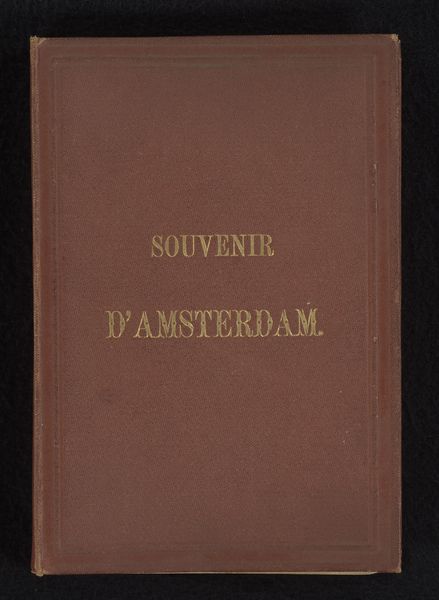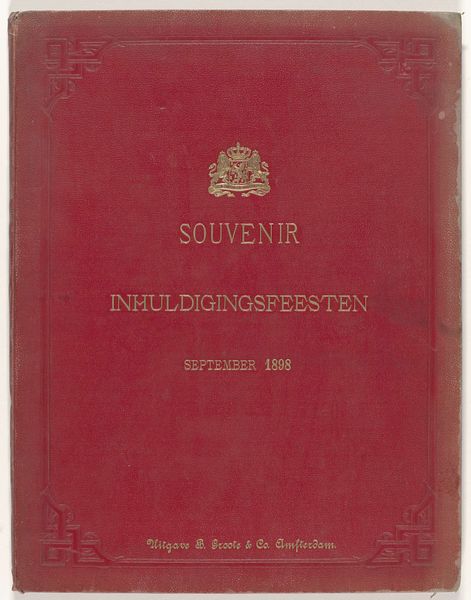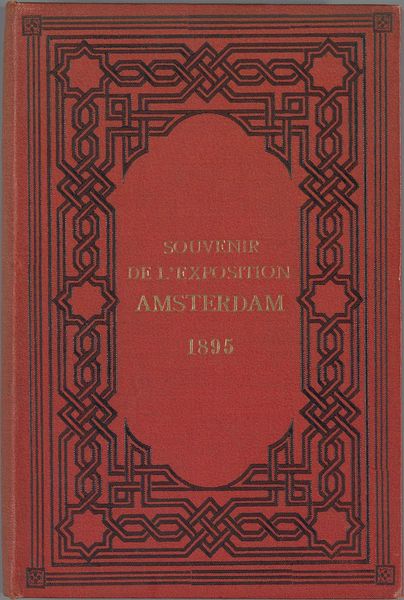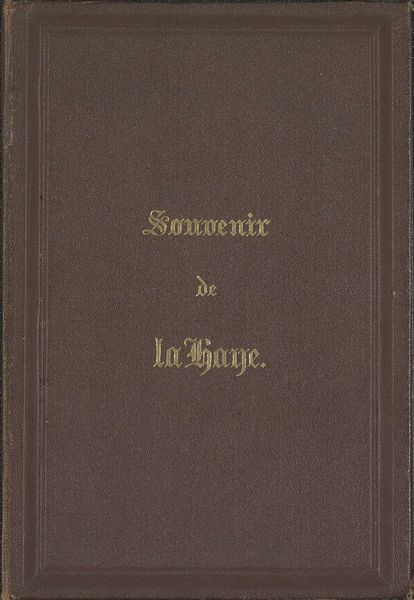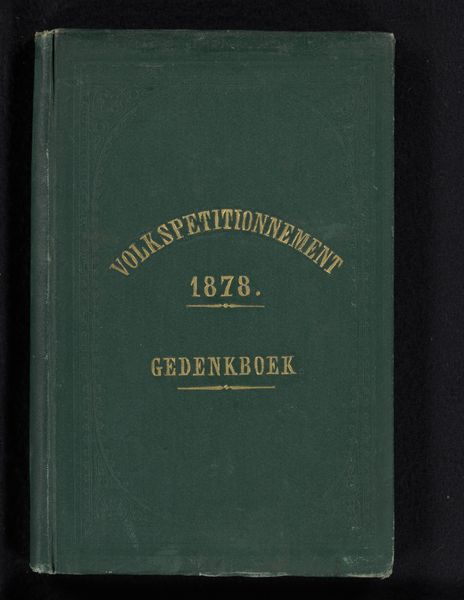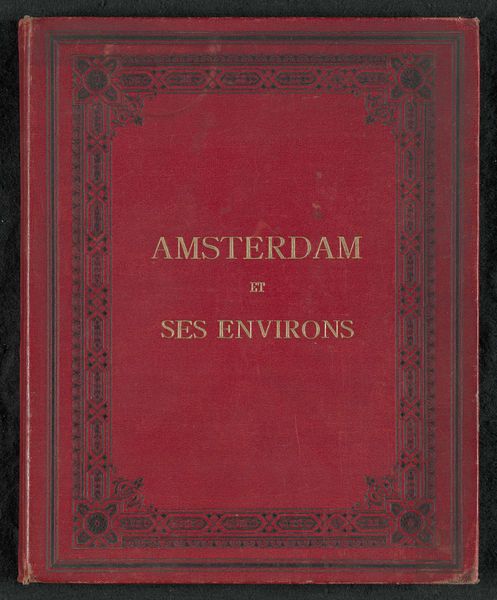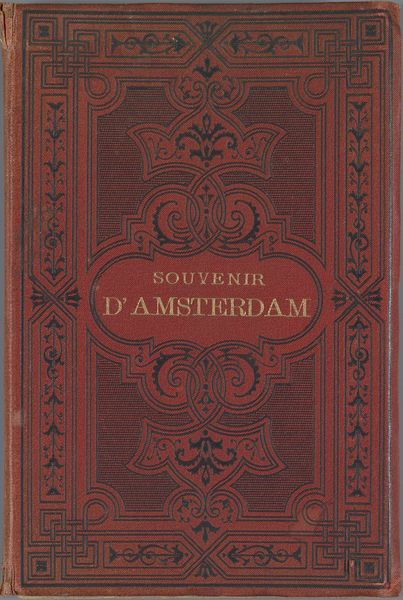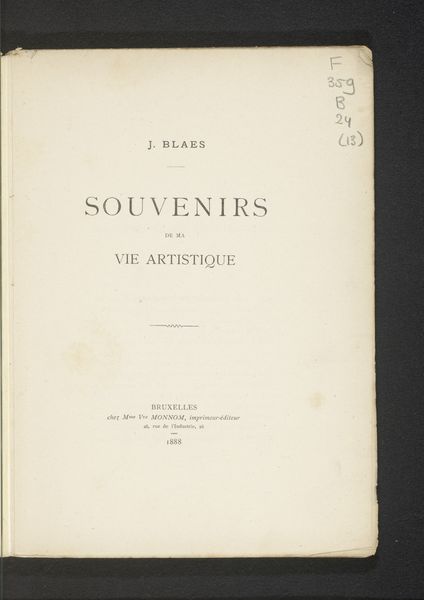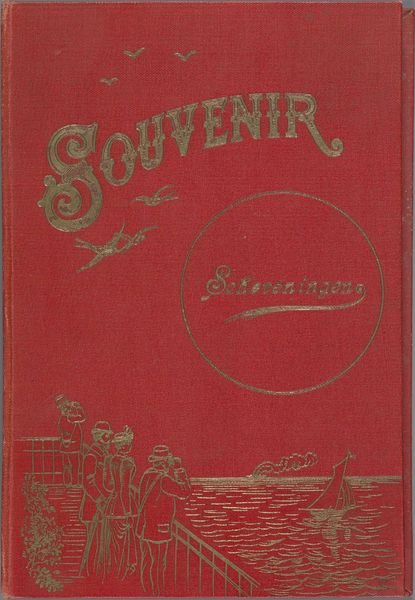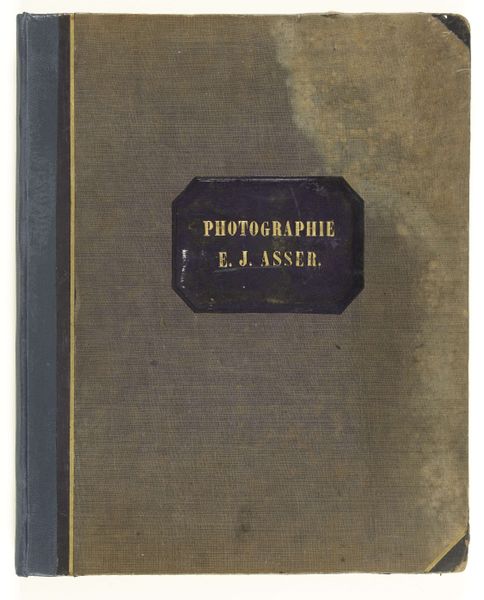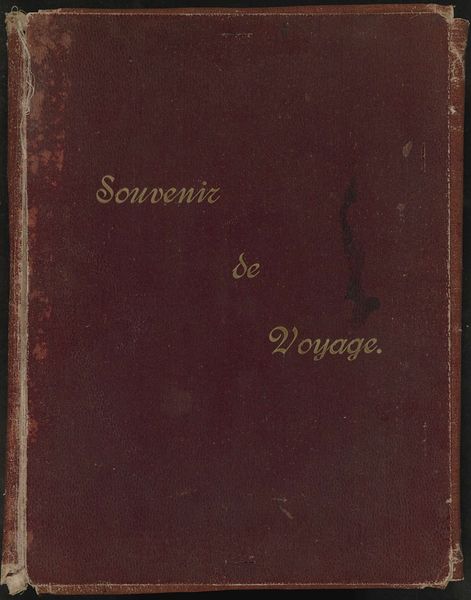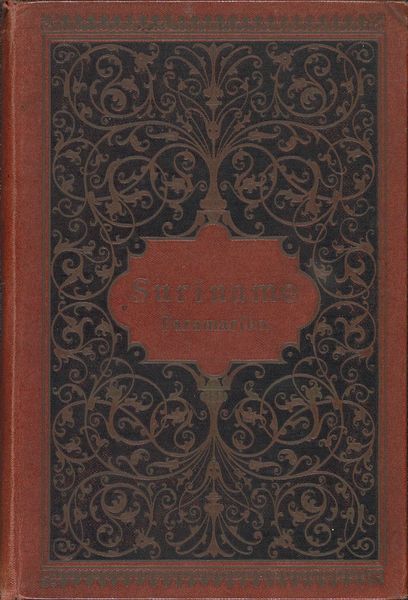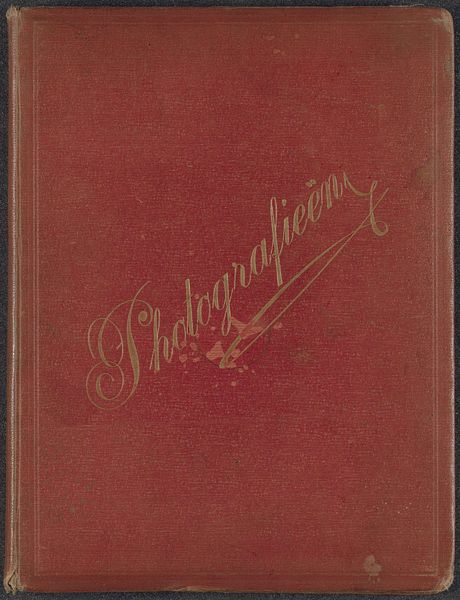
Dimensions: height 169 mm, width 116 mm, thickness 15 mm, height 165 mm, width 1315 mm
Copyright: Rijks Museum: Open Domain
Curator: Let's turn our attention to this rather charming album, “Leporelloalbum met twaalf foto's van Amsterdam,” featuring twelve photographs of Amsterdam, dating from around 1860 to 1900. It's a series of albumen prints, currently held at the Rijksmuseum. Editor: It has such a nostalgic quality. Just looking at the sepia tones and the font on the cover, “Souvenir D’Amsterdam,” you get a strong sense of history and place, not to mention a very commercial one! It’s fascinating how a simple object like this was already catering to tourism back then. Curator: Exactly! This era saw the rise of travel and photography converged to create mementos for visitors. Albums like these shaped the image of Amsterdam that was circulated and consumed. What aspects were being celebrated, and by whom? Editor: I see the city romanticized, I imagine. Pristine canals, stately architecture, people living in harmony and this may have perpetuated certain class and racial biases, ignoring marginalized communities and their narratives. It begs the questions, whose Amsterdam is being represented here? And whose stories are left untold in this souvenir? Curator: Precisely. Examining the choices behind the imagery reveals power structures within the urban landscape. Who had the means to commission, produce, and consume such items, and whose vision of Amsterdam prevailed? Furthermore, the printing technology available then plays a role. The albumen print process was relatively new and contributed to the soft focus and atmospheric qualities. Editor: True, the soft focus does enhance the romanticized image, lending an air of timeless beauty. These were luxury items. The materiality also points to how these souvenirs further ingrained colonial capitalism in this city. Curator: Absolutely. Analyzing the material composition adds another layer of understanding. It highlights the connections between art, technology, social class, and even imperialistic agendas in defining and promoting a specific narrative about Amsterdam. It forces us to consider what's been left outside the frame. Editor: This exercise truly emphasizes how visual culture reinforces dominant ideologies. I'm now eager to explore some lesser known photography, documenting different perspectives of this same city and moment. Curator: It certainly calls us to keep investigating these rich historical layers beneath a deceptively simple object.
Comments
No comments
Be the first to comment and join the conversation on the ultimate creative platform.
